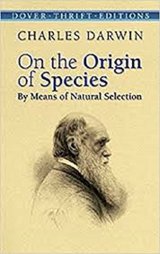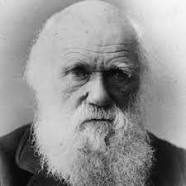On the Origin of Species By Means of Natural Selection Page #14
On the Origin of Species, published on 24 November 1859, is a work of scientific literature by Charles Darwin which is considered to be the foundation of evolutionary biology. Darwin's book introduced the scientific theory that populations evolve over the course of generations through a process of natural selection.
Close investigation, in most cases, will bring naturalists to an agreement how to rank doubtful forms. Yet it must be confessed, that it is in the best-known countries that we find the greatest number of forms of doubtful value. I have been struck with the fact, that if any animal or plant in a state of nature be highly useful to man, or from any cause closely attract his attention, varieties of it will almost universally be found recorded. These varieties, moreover, will be often ranked by some authors as species. Look at the common oak, how closely it has been studied; yet a German author makes more than a dozen species out of forms, which are very generally considered as varieties; and in this country the highest botanical authorities and practical men can be quoted to show that the sessile and pedunculated oaks are either good and distinct species or mere varieties. When a young naturalist commences the study of a group of organisms quite unknown to him, he is at first much perplexed to determine what differences to consider as specific, and what as varieties; for he knows nothing of the amount and kind of variation to which the group is subject; and this shows, at least, how very generally there is some variation. But if he confine his attention to one class within one country, he will soon make up his mind how to rank most of the doubtful forms. His general tendency will be to make many species, for he will become impressed, just like the pigeon or poultry-fancier before alluded to, with the amount of difference in the forms which he is continually studying; and he has little general knowledge of analogical variation in other groups and in other countries, by which to correct his first impressions. As he extends the range of his observations, he will meet with more cases of difficulty; for he will encounter a greater number of closely-allied forms. But if his observations be widely extended, he will in the end generally be enabled to make up his own mind which to call varieties and which species; but he will succeed in this at the expense of admitting much variation,--and the truth of this admission will often be disputed by other naturalists. When, moreover, he comes to study allied forms brought from countries not now continuous, in which case he can hardly hope to find the intermediate links between his doubtful forms, he will have to trust almost entirely to analogy, and his difficulties will rise to a climax. Certainly no clear line of demarcation has as yet been drawn between species and sub-species--that is, the forms which in the opinion of some naturalists come very near to, but do not quite arrive at the rank of species; or, again, between sub-species and well-marked varieties, or between lesser varieties and individual differences. These differences blend into each other in an insensible series; and a series impresses the mind with the idea of an actual passage. Hence I look at individual differences, though of small interest to the systematist, as of high importance for us, as being the first step towards such slight varieties as are barely thought worth recording in works on natural history. And I look at varieties which are in any degree more distinct and permanent, as steps leading to more strongly marked and more permanent varieties; and at these latter, as leading to sub-species, and to species. The passage from one stage of difference to another and higher stage may be, in some cases, due merely to the long-continued action of different physical conditions in two different regions; but I have not much faith in this view; and I attribute the passage of a variety, from a state in which it differs very slightly from its parent to one in which it differs more, to the action of natural selection in accumulating (as will hereafter be more fully explained) differences of structure in certain definite directions. Hence I believe a well-marked variety may be justly called an incipient species; but whether this belief be justifiable must be judged of by the general weight of the several facts and views given throughout this work. It need not be supposed that all varieties or incipient species necessarily attain the rank of species. They may whilst in this incipient state become extinct, or they may endure as varieties for very long periods, as has been shown to be the case by Mr. Wollaston with the varieties of certain fossil land-shells in Madeira. If a variety were to flourish so as to exceed in numbers the parent species, it would then rank as the species, and the species as the variety; or it might come to supplant and exterminate the parent species; or both might co-exist, and both rank as independent species. But we shall hereafter have to return to this subject. From these remarks it will be seen that I look at the term species, as one arbitrarily given for the sake of convenience to a set of individuals closely resembling each other, and that it does not essentially differ from the term variety, which is given to less distinct and more fluctuating forms. The term variety, again, in comparison with mere individual differences, is also applied arbitrarily, and for mere convenience sake. Guided by theoretical considerations, I thought that some interesting results might be obtained in regard to the nature and relations of the species which vary most, by tabulating all the varieties in several well-worked floras. At first this seemed a simple task; but Mr. H. C. Watson, to whom I am much indebted for valuable advice and assistance on this subject, soon convinced me that there were many difficulties, as did subsequently Dr. Hooker, even in stronger terms. I shall reserve for my future work the discussion of these difficulties, and the tables themselves of the proportional numbers of the varying species. Dr. Hooker permits me to add, that after having carefully read my manuscript, and examined the tables, he thinks that the following statements are fairly well established. The whole subject, however, treated as it necessarily here is with much brevity, is rather perplexing, and allusions cannot be avoided to the "struggle for existence," "divergence of character," and other questions, hereafter to be discussed. Alph. De Candolle and others have shown that plants which have very wide ranges generally present varieties; and this might have been expected, as they become exposed to diverse physical conditions, and as they come into competition (which, as we shall hereafter see, is a far more important circumstance) with different sets of organic beings. But my tables further show that, in any limited country, the species which are most common, that is abound most in individuals, and the species which are most widely diffused within their own country (and this is a different consideration from wide range, and to a certain extent from commonness), often give rise to varieties sufficiently well-marked to have been recorded in botanical works. Hence it is the most flourishing, or, as they may be called, the dominant species,--those which range widely over the world, are the most diffused in their own country, and are the most numerous in individuals,--which oftenest produce well-marked varieties, or, as I consider them, incipient species. And this, perhaps, might have been anticipated; for, as varieties, in order to become in any degree permanent, necessarily have to struggle with the other inhabitants of the country, the species which are already dominant will be the most likely to yield offspring which, though in some slight degree modified, will still inherit those advantages that enabled their parents to become dominant over their compatriots.
Translation
Translate and read this book in other languages:
Select another language:
- - Select -
- 简体中文 (Chinese - Simplified)
- 繁體中文 (Chinese - Traditional)
- Español (Spanish)
- Esperanto (Esperanto)
- 日本語 (Japanese)
- Português (Portuguese)
- Deutsch (German)
- العربية (Arabic)
- Français (French)
- Русский (Russian)
- ಕನ್ನಡ (Kannada)
- 한국어 (Korean)
- עברית (Hebrew)
- Gaeilge (Irish)
- Українська (Ukrainian)
- اردو (Urdu)
- Magyar (Hungarian)
- मानक हिन्दी (Hindi)
- Indonesia (Indonesian)
- Italiano (Italian)
- தமிழ் (Tamil)
- Türkçe (Turkish)
- తెలుగు (Telugu)
- ภาษาไทย (Thai)
- Tiếng Việt (Vietnamese)
- Čeština (Czech)
- Polski (Polish)
- Bahasa Indonesia (Indonesian)
- Românește (Romanian)
- Nederlands (Dutch)
- Ελληνικά (Greek)
- Latinum (Latin)
- Svenska (Swedish)
- Dansk (Danish)
- Suomi (Finnish)
- فارسی (Persian)
- ייִדיש (Yiddish)
- հայերեն (Armenian)
- Norsk (Norwegian)
- English (English)
Citation
Use the citation below to add this book to your bibliography:
Style:MLAChicagoAPA
"On the Origin of Species By Means of Natural Selection Books." Literature.com. STANDS4 LLC, 2025. Web. 10 Jan. 2025. <https://www.literature.com/book/on_the_origin_of_species_by_means_of_natural_selection_323>.




Discuss this On the Origin of Species By Means of Natural Selection book with the community:
Report Comment
We're doing our best to make sure our content is useful, accurate and safe.
If by any chance you spot an inappropriate comment while navigating through our website please use this form to let us know, and we'll take care of it shortly.
Attachment
You need to be logged in to favorite.
Log In